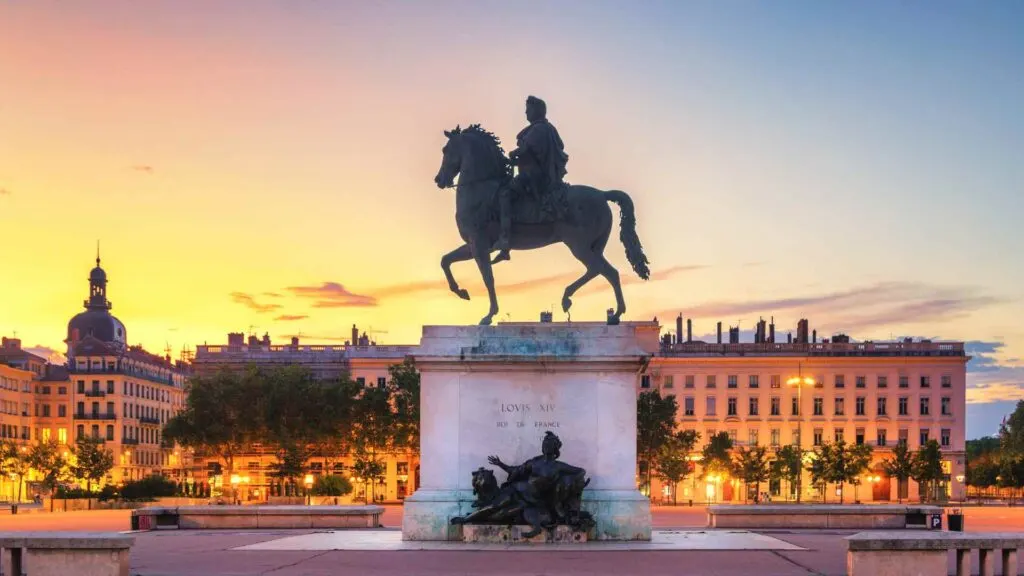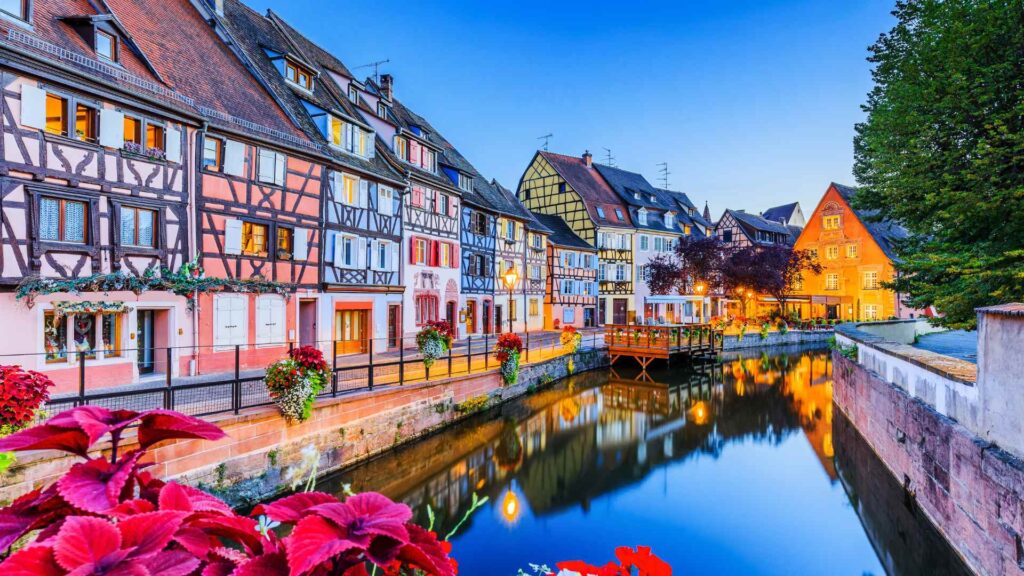France has captivated the world with its timeless allure, rich culture, and fascinating history.
From iconic landmarks to culinary treasures, France has endless surprises. Dive into these fun facts and discover why this beautiful country holds such a unique place in our hearts.
History and Heritage of France
- France has one of the oldest histories in Europe, dating back to the Stone Age with evidence of early human settlements.
- The Eiffel Tower, France’s most iconic landmark, was initially opposed by many Parisians when it was first constructed in 1889.
- France is famous for the Bastille Day celebrations on July 14, commemorating the French Revolution’s beginning in 1789.
- The French Republic has been through five different republics and multiple empires since the French Revolution.
- King Louis XIV, the “Sun King,” reigned for 72 years, the longest rule of any monarch in European history.
- The Louvre Museum in Paris, originally a royal palace, became a museum in 1793 during the French Revolution.
- The guillotine was the official method of execution in France until 1977, with the last execution taking place that same year.
- France has produced some of the world’s most influential philosophers, including Voltaire, Descartes, and Rousseau.
- Joan of Arc, one of France’s most famous heroines, was only 19 when she was executed in 1431.
- France was a founding member of the European Union in 1957, helping to establish modern Europe.
- The French Revolution introduced many of today’s democratic ideals, including equality, freedom, and fraternity.
- Napoleon Bonaparte, a prominent French military leader, crowned himself Emperor in 1804, changing the course of French and world history.
- France’s iconic flag, the Tricolore, represents liberty, equality, and fraternity, the values of the French Revolution.
- The Château de Chambord, built by King Francis I, is one of the largest and most beautiful Renaissance castles in the world.
- The country is home to 44 UNESCO World Heritage Sites, from the historical center of Avignon to Mont Saint-Michel.

French Cuisine and Culinary Culture
- The baguette, a French staple, was declared a part of France’s cultural heritage in 1993.
- France produces over 1,000 different types of cheese, from Camembert to Brie to Roquefort.
- Champagne, the famous sparkling wine, can only be called Champagne if it comes from the Champagne region in France.
- French cuisine was the first in the world to be declared a UNESCO intangible cultural heritage in 2010.
- France is the largest wine producer in the world, with renowned regions like Bordeaux, Burgundy, and the Rhône Valley.
- Croissants, now a classic French breakfast, actually originated in Austria.
- Foie gras, a delicacy made from duck or goose liver, is a centuries-old tradition dating back to ancient Egypt.
- French chefs introduced haute cuisine, or “high cooking,” in the 19th century, transforming global culinary standards.
- France is the birthplace of the Michelin Guide, a rating system for high-quality dining establishments worldwide.
- The French invented the modern restaurant in the 18th century, and Paris is still known for its incredible dining options.
- The Café de Flore in Paris has served some of history’s greatest thinkers, including Jean-Paul Sartre and Simone de Beauvoir.
- Crêpes, a popular thin pancake, originated in the region of Brittany and can be served sweet or savory.
- Ratatouille, a vegetable stew, comes from the Provence region and is beloved worldwide.
- The French love snails! They consume approximately 30,000 tons of escargot each year.
- French food laws strictly regulate what qualifies as authentic, protecting items like baguettes and Champagne.

Arts and Literature of France
- France has produced some of the most famous writers in the world, such as Victor Hugo, author of Les Misérables.
- The Louvre Museum, home to the Mona Lisa, is the largest art museum in the world.
- The Impressionist art movement, which transformed painting, began in France with artists like Monet and Renoir.
- French is known as the “language of love” and has inspired countless romantic poets and writers.
- The Arc de Triomphe, one of France’s most recognizable monuments, was commissioned by Napoleon in 1806.
- The Opéra Garnier in Paris is one of the most stunning opera houses, inspiring The Phantom of the Opera.
- France is home to the world’s oldest running film festival, the Cannes Film Festival, held annually since 1946.
- Marcel Proust’s novel In Search of Lost Time is one of the longest novels ever written, at around 4,215 pages.
- The French Gothic architecture style, which began in France, includes famed cathedrals like Notre-Dame.
- Claude Debussy, a pioneering composer of the Impressionist music movement, was born in France.
- French literature dates back to the Middle Ages with The Song of Roland, one of the oldest works in French.
- The Moulin Rouge, founded in 1889, is the birthplace of the modern can-can dance.
- Paris is known as the “City of Light,” not only for its early adoption of street lighting but also for its cultural influence.
- Montmartre, a historic district in Paris, was home to artists like Picasso, Van Gogh, and Dali.
- French artist Henri Matisse pioneered modern art with his bold use of color and distinctive style.

Famous Landmarks and Sites in France
- The Eiffel Tower was originally intended to be dismantled after 20 years but became a permanent fixture due to its popularity.
- Mont Saint-Michel, an island commune, experiences dramatic tides that make it appear as if it floats on water.
- The Palace of Versailles, once home to Louis XIV, is one of the most visited and opulent sites in the world.
- Disneyland Paris is Europe’s most visited theme park, attracting millions of visitors annually.
- The French Alps are home to Mont Blanc, the highest mountain in Western Europe.
- The stunning lavender fields of Provence attract visitors from around the world every summer.
- Saint-Tropez, a glamorous coastal town, gained international fame as a celebrity getaway in the 1950s.
- The D-Day beaches in Normandy mark the historic Allied invasion during World War II.
- The French Riviera, known as the Côte d’Azur, is famous for its beautiful beaches and luxurious lifestyle.
- Giverny, home to Claude Monet, was the inspiration for many of his famous water lily paintings.
- The Cathédrale Notre-Dame de Chartres is renowned for its exquisite stained glass windows from the 12th century.
- The Pont du Gard, an ancient Roman aqueduct, is a marvel of ancient engineering.
- Carcassonne, a fortified medieval city, is one of France’s best-preserved walled cities.
- The Loire Valley is famous for its stunning châteaux, often called the “Garden of France.”
- Lyon is known for its Renaissance architecture, and its historic center is a UNESCO World Heritage Site.
Lifestyle and Traditions in France
- The French traditionally greet with a kiss on both cheeks, a custom known as la bise.
- The 35-hour workweek is a unique feature of French labor law, aiming for a better work-life balance.
- Every year on April 1, the French celebrate April Fools’ Day, or Poisson d’Avril, with fish-themed pranks.
- Sunday markets are a cherished tradition in many French villages and towns, offering fresh produce and local goods.
- French fashion is world-renowned, with Paris being one of the “Big Four” fashion capitals.
- French children traditionally receive gifts from Père Noël on Christmas, but regional traditions vary.
- The French love cycling, and the Tour de France is one of the most famous bicycle races in the world.
- France has a law requiring supermarkets to donate unsold, edible food to charities.
- Bastille Day celebrations include fireworks, parades, and gatherings across the country.
- French cafés are more than places to eat; they are social hubs central to daily French life.
- French schools have long summer holidays, lasting about two months, from early July to early September.
- Most French people prefer to take their annual vacations in August, with many businesses closing during this time.
- The French respect dining etiquette, and it is customary to say “bon appétit” before eating.
- Petanque, a popular outdoor game similar to bocce, originated in the south of France.
- In France, dinner typically starts around 7-8 pm and can be a lengthy affair, often lasting several hours.
Bonus Fun Facts About France
- French was once the official language of England for 300 years.
- The French use more greetings than most cultures, with phrases for morning, afternoon, and evening.
- France has one of the highest pet ownership rates in Europe, with millions of dogs and cats.
- The French word for “mother-in-law” also means “beautiful mother.”
- French law allows couples to marry posthumously in exceptional cases.
- French police officers were once required to wear hats at all times while on duty.
- France has the most Nobel Prizes in Literature of any country in the world.
- French people invented the metric system during the French Revolution.
- Déjà vu is a French term that translates to “already seen.”
- The French government awards the Legion of Honor for exceptional service.
- French students begin learning philosophy in high school.
- The French Revolution inspired other nations to pursue democracy.
- The oldest recorded marathon in France dates back to the 1800s.
- The world’s oldest known shoe was found in France.
- France has 12 time zones due to its overseas territories.
